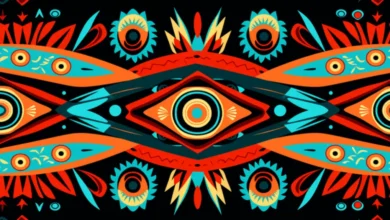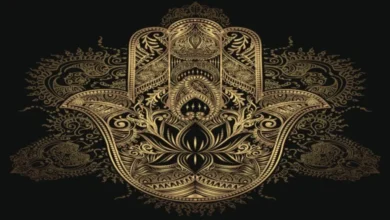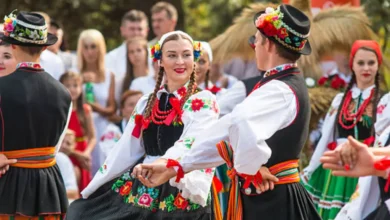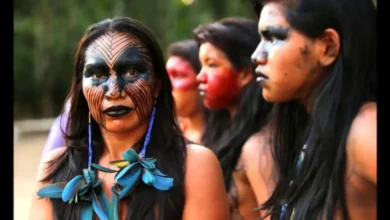Why Ancient Skies Still Shine on Our Shoulders
Look up.
Not at your phone. Not at the ceiling. Look up — at the night sky.
See those stars? Those swirling galaxies? That silent, silver moon?
Now imagine wearing them.
See also Geometric Patterns in Folk Clothing: Symbolism, History, and Designs
Geometric Patterns in Folk Clothing: Symbolism, History, and DesignsNot as glittery stickers or festival face paint — but as sacred symbols stitched into cloth, beaded onto leather, woven with prayer.
For thousands of years, cultures around the world have looked to the heavens — not just for navigation or farming calendars — but for spiritual guidance, cosmic identity, and divine connection.
And they brought those visions down to Earth… through clothing.
In this article, you’ll discover:
See also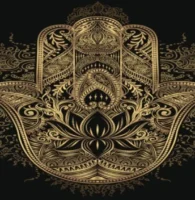 Protective Symbols in Folk Wear: Warding Off Evil with Ancient Designs
Protective Symbols in Folk Wear: Warding Off Evil with Ancient Designs- ✨ How stars, suns, moons, and constellations appear in global traditional attire
- 🌞 What these cosmic symbols really mean — beyond “pretty design”
- 📿 The deep spiritual roles they play in ceremony, protection, and identity
- 🌍 Real examples from Native American, African, Asian, Indigenous, and ancient traditions
- 👕 How to honor these symbols today — ethically, respectfully, meaningfully
- 🧵 A simple DIY guide to create your own cosmic-inspired pattern (no appropriation required!)
Let’s begin — under the same sky our ancestors gazed upon.
What Are Cosmic Symbols in Clothing — Really?
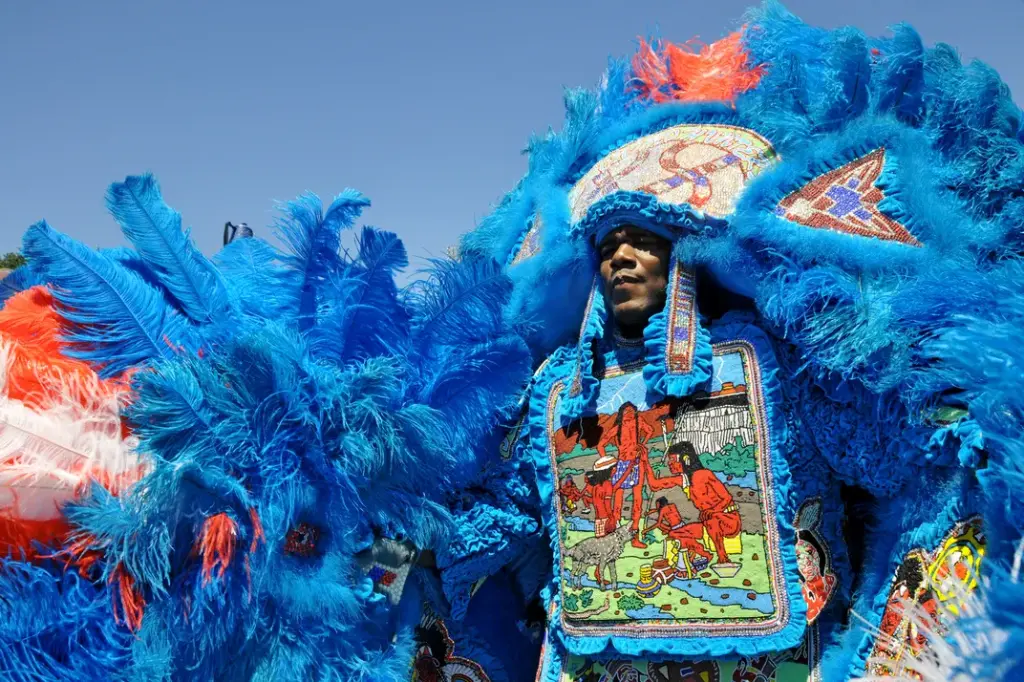
Cosmic symbols = visual representations of celestial bodies (sun, moon, stars, planets, constellations) and cosmic forces (light, cycles, infinity, divine order) embedded into traditional attire for spiritual, cultural, or protective purposes.
They’re not fashion trends.
They’re:
- Maps of the soul’s journey
- Prayers sewn in thread
- Shields against darkness
- Reminders: You are part of something vast
Think:
- Navajo star blankets wrapped around newborns
- Egyptian priestly robes embroidered with golden sun disks
- Berber women’s dresses mapping Pleiades across their backs
- Inca nobles wearing tunics blazing with Inti, the Sun God
These garments don’t just cover the body — they connect it to the cosmos.
Why Did Cultures Sew the Sky Into Their Clothes?
Short answer: because the sky spoke to them.
Longer answer? Four powerful reasons.
1. The Sky Was Sacred Space
Before telescopes, before satellites — people saw gods, ancestors, spirits dancing among the stars.
Clothing became a bridge between human and divine.
“The heavens declare the glory of the Creator. We wear that glory close to our skin.”
— Diné (Navajo) Elder, oral tradition
2. Celestial Bodies Guided Life
Planting seasons. Migration routes. Ritual timing. Birth omens.
If stars told you when to act — why not stitch them onto your ceremonial robe?
3. Cosmic Patterns Offered Protection
Symbols like the sun disk, eight-pointed star, or crescent moon weren’t just beautiful — they were believed to deflect evil, illness, or misfortune.
Wearable amulets — powered by the universe.
4. Wearing the Cosmos = Claiming Your Place in It
To wear a constellation was to say:
“I belong here. I am held. I am seen — even by the stars.”
Common Cosmic Symbols & Their Meanings (Quick Reference Table)
| Symbol | Cultures That Use It | Spiritual / Cultural Meaning |
|---|---|---|
| ☀️ Sun Disk | Inca, Egyptian, Hopi, Baltic | Divine power, life source, masculine energy, renewal |
| 🌙 Crescent Moon | Islamic, Turkic, Berber, West African | Feminine cycles, intuition, hidden knowledge |
| ⭐ Eight-Pointed Star | Slavic, Islamic, Mesopotamian | Balance, harmony, divine order, protection |
| 🌠 Spiral | Celtic, Maori, Andean, Aboriginal | Journey, evolution, infinity, returning paths |
| 🌌 Constellations | Polynesian, Dogon, Lakota, Ainu | Ancestral maps, navigation, spirit guides |
| 🔁 Circle / Ring | Tibetan, Mongolian, Native American | Wholeness, cycles, eternity, unity |
| 🌈 Rainbow | Quechua, Cherokee, Buddhist | Bridge between worlds, hope, divine promise |
Now, let’s explore each symbol deeply — with real cultural examples.
☀️ The Sun: Wearable Light, Divine Fire
Round. Radiant. Unblinking.
The sun appears in traditional attire more than any other cosmic symbol — and for good reason.
It gives life. It marks time. It sees everything.
Inca — Inti, the Sun God
Incan royalty wore unkuñas (tunics) woven with gold threads forming sun disks. Not for vanity — for devotion.
Inti wasn’t “just” a god. He was father. Provider. Lawgiver.
“Without Inti, no maize grows. Without maize, no people live.”
— Quechua proverb
Sun motifs were placed over the heart — aligning human rhythm with solar rhythm.
Hopi — Sun Face Kachina
Worn during ceremonial dances, the Sun Face symbolizes balance — light without burning, warmth without drought.
Dancers wearing Sun Kachina regalia pray for gentle seasons and abundant harvests.
Baltic Nations — Saulė, the Sun Goddess
Lithuanian and Latvian folk skirts feature zig-zag sun rays. Worn during Jāņi (summer solstice), these patterns “wake” the sun after winter’s sleep.
Women danced barefoot in fields, skirts swirling — literally spinning sunlight into the soil.
“We do not beg the sun for light. We remind it — through dance, through thread — that we are still here.”
— Latvian folk saying
🌙 The Moon: Whispering Wisdom, Hidden Power
While the sun shouts — the moon listens.
Its phases mirror human cycles: birth, growth, release, rest.
No wonder it’s stitched into robes, veils, headdresses — especially women’s ceremonial wear.
Islamic World — Crescent Moon & Stars
Seen on Ottoman kaftans, Moroccan caftans, and Mughal shawls — the crescent isn’t just political. It’s spiritual.
Symbolizes:
- Guidance through darkness
- Submission to divine rhythm
- Feminine mystery (paired with Venus/star)
In Sufi traditions, the crescent represents the soul’s curve — always turning toward the Divine.
West Africa — Yoruba Gele Headwraps
Nigerian women tie elaborate headwraps (gele) for weddings and festivals. Some patterns include subtle moon curves — honoring Oshun, goddess of rivers, love, and the moon’s reflective power.
Moon = intuition. Flow. Emotional tides.
Siberian Shamanic Robes — Lunar Phases
Evenki and Buryat shamans wore reindeer-hide coats painted with waxing/waning moons.
Why? To track spirit journeys. Each phase marked a stage of healing, vision, or return.
“The moon doesn’t rush. Yet it moves heaven and earth. So must we.”
— Buryat proverb
⭐ Stars: Tiny Lights, Infinite Meaning
Stars are the original storytellers.
Cultures didn’t just see dots in the sky — they saw ancestors. Heroes. Animal spirits. Divine eyes watching over them.
And they stitched those stories into cloth.
Navajo — Star Beings & Protective Blankets
Navajo weavers create Star Gazers and Morning Star patterns in wool blankets.
Legend says Star Beings gifted weaving to the Diné. Each point of the star = a blessing: health, harmony, beauty, strength, wisdom.
Newborns are wrapped in star blankets — so they enter life under celestial guardianship.
“When you sleep beneath a star blanket, the sky remembers you.”
— Navajo weaver Lillie Taylor (cited in Native Peoples Magazine, 2021)
Berber (Amazigh) — Diamond Stars Mapping the Sky
Amazigh women in Morocco and Algeria embroider diamond-shaped stars onto woolen capes (tachelhit).
Each diamond = a star in Ursa Major or Pleiades.
Why? For navigation — yes. But also for invoking ancestral presence.
Older women teach girls: “Stitch the North Star here — so you never lose your way.”
Dogon (Mali) — Sirius & the Cosmic Egg
The Dogon people encode astronomical knowledge into woven robes — including the orbit of Sirius B, invisible to the naked eye.
Their patterns show spirals within spirals — representing the “Cosmic Egg,” the origin of all matter.
Anthropologists were stunned. How did they know?
“The stars taught us before telescopes existed. We listened.”
— Dogon elder, quoted in Griaule & Dieterlen, The Pale Fox (1965)
🌠 Spirals: The Universe’s Favorite Shape
Spirals appear everywhere:
- Celtic knotwork on Irish cloaks
- Maori koru patterns on woven flax garments
- Andean stepped spirals on Quechua ponchos
- Aboriginal concentric circles on bark paintings turned ceremonial wraps
What Does the Spiral Mean?
More than “swirl.”
It represents:
- The soul’s journey — outward, inward, upward
- Evolution — never linear, always returning wiser
- Infinity — no beginning, no end
- Breath — expansion and contraction
In Maori tradition, the koru (unfurling fern) spiral = new life, growth, peace. Worn on kākahu (cloaks) during rites of passage.
In Andean cosmology, spirals map the three worlds: Hanan Pacha (upper/sky), Kay Pacha (this world), Uku Pacha (inner/underworld).
“You are not lost. You are spiraling — as all things must.”
— Quechua teaching
🌌 Constellations: Stitched Star Maps
Some cultures didn’t just wear stars — they wore entire constellations.
Not for astronomy class. For ancestry.
Polynesian — Star Compass on Tapa Cloth
Navigators memorized star paths across the Pacific. They then painted or stamped those paths onto tapa (barkcloth) worn during voyaging ceremonies.
The Southern Cross? Orion’s Belt? Pleiades? All there — not drawn, but felt.
“The stars are our ancestors’ footprints. We sail by their memory.”
— Mau Piailug, Micronesian navigator (documented in The Navigators, 1983)
Lakota — Star Knowledge in Quillwork
Before beads, Lakota artisans used porcupine quills to stitch star clusters onto buffalo robes.
Specific constellations marked sacred times: the reappearance of the Seven Council Fires (Pleiades) signaled spring ceremonies.
Ainu (Japan) — Ramat (Spirit Stars)
Ainu ceremonial robes (attus) feature small white stitches — each one a ramat, or spirit star.
Worn during iomante (bear ceremony), these stars guide animal spirits back to the heavens.
“Every stitch is a prayer. Every star, a safe passage.”
— Ainu elder, Hokkaido Oral History Project
🔁 Circles & Rings: The Shape of Eternity
Round shapes — suns, moons, wheels, rings — appear constantly in cosmic attire.
Why?
Because circles have no beginning. No end. No hierarchy.
They represent:
- Wholeness
- Cycles (seasons, life, death, rebirth)
- Unity (no corners to hide in)
- The womb of creation
Tibetan — Dharmachakra (Wheel of Dharma)
Monks’ robes sometimes feature embroidered wheels — not decoration, but doctrine.
Each spoke = an aspect of the Eightfold Path. Wearing it = walking the path.
Mongolian — Eternal Knot on Deel Coats
The deel (traditional robe) often features an endless knot pattern — symbolizing interconnectedness of all things.
Worn by herders crossing steppes, it reminds: You are never alone. The universe holds you.
Native American — Medicine Wheel Patterns
Plains tribes bead medicine wheels onto moccasins, shirts, cradleboards.
Four directions. Four elements. Four stages of life.
Wearing it = alignment. Balance. Sacred orientation.
“Step into the circle. You are home.”
— Black Elk, Oglala Lakota holy man
🌈 Rainbows: Bridges Between Worlds
Rainbows aren’t just weather phenomena.
In many traditions, they’re divine promises. Portals. Messengers.
Quechua — K’uychi on Ponchos
Andean weavers stitch rainbow stripes (k’uychi) into alpaca ponchos.
Represents the bridge between Pachamama (Earth Mother) and Inti (Sun Father).
Also worn during Qoyllur Rit’i pilgrimage — where mountain glaciers meet sky.
Cherokee — Uktena Serpent & Rainbow Arch
Cherokee ribbon shirts sometimes feature arched rainbow patterns — referencing the Uktena, a horned serpent whose scales shimmer like rainbows.
Symbolizes transformation, danger overcome, sacred power.
Buddhist Monastic Robes — Subtle Rainbow Hues
In Himalayan regions, monks dye robes using natural pigments that shift color in sunlight — echoing the impermanent, luminous nature of reality.
“Walk the rainbow path. It is fragile. It is real. It leads beyond fear.”
— Tibetan teaching
Colonialism Tried to Erase These Symbols. Communities Fought Back.
Let’s pause.
Many of these cosmic symbols were banned.
Missionaries called them “idolatry.” Colonizers labeled them “primitive.” Boarding schools punished children for wearing star blankets or sun robes.
But communities resisted.
They:
- Hid symbols in hemlines and linings
- Used muted threads to avoid detection
- Passed patterns orally — “Grandmother, show me the star path again”
- Revived them fiercely in modern times
Today:
- Navajo star quilts are central to healing ceremonies
- Maori koru designs adorn graduation gowns and national emblems
- Berber women lead cooperatives selling star-embroidered textiles globally — on their terms
“They thought stars could be silenced. But stars don’t need permission to shine.”
— Layla Feghali, Amazigh textile artist (Morocco)
Modern Revival: How to Wear Cosmic Symbols With Respect
Yes, you can wear these patterns today.
But please — do it right.
✅ DO:
- Research the symbol’s origin and sacred context
- Buy from Native/Indigenous/folk artists directly
- Ask if a design is ceremonial or restricted
- Wear with reverence — not as costume or trend
- Credit the culture and creator publicly
❌ DON’T:
- Buy mass-produced “tribal print” from fast fashion
- Wear sacred ceremonial items (e.g., Sun Dance regalia) as accessories
- Claim spiritual authority over symbols you didn’t inherit
- Ignore requests from communities asking you not to use certain patterns
“Appreciation asks questions. Appropriation assumes answers.”
— Dr. Adrienne Keene, Cherokee Nation, @nativeappropriations
DIY: Create Your Own Cosmic Symbol (Ethically & Personally)
Want to design a cosmic-inspired motif — rooted in your own experience, not someone else’s sacred tradition?
Here’s how:
Step 1: Stargaze (Literally)
Spend 10 minutes under the night sky. Or watch sunrise. Or notice moon phases for a week.
What catches your attention? A bright planet? A curved crescent? A cluster of stars?
Step 2: Journal Its Meaning to YOU
Ask:
- What does this celestial body teach me?
- What emotion does it stir?
- What part of my life does it reflect?
Example:
Venus appears at dusk — steady, soft, guiding me home after long days. My symbol? A teardrop star with three trailing lines — for peace, patience, presence.
Step 3: Simplify Into a Repeatable Pattern
Turn your insight into shape: curve, dot, line, spiral.
Keep it abstract. Make it yours.
Step 4: Apply It Meaningfully
Stitch it on a journal cover. Paint it on a wall. Print it on a tote bag. Wear it as a reminder.
This isn’t cultural theft — it’s personal cosmology.
“The sky belongs to everyone. Your relationship with it? That’s yours to define.”
— Toko-pa Turner, author of Belonging
Table: Where to Buy Ethically Made Cosmic-Inspired Attire
| Culture / Region | Ethical Brand or Collective | What They Offer | Website / Contact |
|---|---|---|---|
| Navajo (Diné) | Spider Rock Girls (Arizona) | Star quilts, woven blankets | spiderrockgirls.com |
| Berber (Amazigh) | Anou Cooperative (Morocco) | Hand-embroidered capes, star motifs | shopanou.com |
| Maori | Kākahu Collective (Aotearoa/NZ) | Koru-patterned cloaks, modern wear | kakahu.co.nz |
| Andean | Threads of Peru | Rainbow-striped ponchos, spiral weaves | threadsofperu.com |
| Ainu | Ainu Craft Official Store (Hokkaido) | Ramat-star stitched attus robes | ainu-craft.jp |
| Baltic | Saules Meitiņas (Latvia) | Sun-maiden skirts, solstice wear | saulesmeitas.lv |
Always verify authenticity. Avoid Amazon/Etsy resellers unless verified by the community.
Why This Matters More Than Ever
We live in a fractured world.
Screens glow brighter than stars. Algorithms replace intuition. Concrete covers sacred ground.
Cosmic symbols in traditional attire offer something radical:
A reminder that you are not separate from the universe. You are woven into it.
When you wear a sun disk, you carry light.
When you stitch a spiral, you honor your becoming.
When you bead a constellation, you walk with ancestors.
These symbols are anchors. Compasses. Silent prayers.
They invite you to look up. Breathe deep. Remember your place in the whole.
“You are not a drop in the ocean. You are the entire ocean in a drop.”
— Rumi (often echoed in Indigenous cosmologies worldwide)
Wear the Sky. Honor Its Keepers. Return the Light
You don’t need a full ceremonial robe to carry cosmic wisdom.
Start small. Start true.
🌟 1. Learn One Symbol Deeply
Pick a sun, star, or spiral from this article. Research its roots. Read a book by a Native or Indigenous scholar.
📚 Recommended:
- The Wayfinders by Wade Davis (on Polynesian star navigation)
- Black Elk Speaks by John Neihardt & Black Elk (Lakota cosmology)
- Indigenous Astronomy edited by Duane Hamacher (global perspectives)
🧵 2. Support Living Sky-Keepers
Buy directly from cultural creators. Pay fairly. Share their stories. Tag them. Thank them.
👉 Tip: Search “[Culture] + cosmic textile artist + Instagram”
🎨 3. Create Your Own Celestial Symbol
Use the DIY guide above. Make something only you understand — born from your own sky-gazing.
🗣️ 4. Speak Up
See sacred symbols being sold as party costumes? Gently educate. See brands profiting from stolen star patterns? Call for accountability.
🌍 5. Give Back to the Sky
Reduce light pollution. Support dark sky preserves. Plant trees that let starlight through. Advocate for climate justice — because polluted skies dim our cosmic connection.
“Protect the night. The stars are our oldest teachers.”
— International Dark-Sky Association
Final Thought: You Are Stardust Wearing Skin
Next time you see a sun embroidered on a sleeve, a moon beaded on a cuff, a constellation woven into a shawl — pause.
That’s not “just fabric.”
That’s a grandmother whispering to the sky.
A child dreaming under star-blankets.
A dancer spinning sunlight into soil.
A weaver threading eternity into wool.
Cosmic symbols in traditional attire are living prayers. Silent songs. Earthbound starlight.
Wear them with reverence. Learn their language. Pass them on — correctly.
And remember:
You, too, are made of the same stuff as stars.
Wear that truth boldly.
💌 Loved this? Share it with someone who gazes at stars, studies myths, or wonders why old patterns still glow.
🌌 Follow #CosmicTextiles or #WearTheSky on Instagram to see living traditions shimmering today.
🧵 Ready to make your own symbol? Grab thread. Look up. Begin.
Written under starlight, with respect for all sky-honoring cultures. May we wear their wisdom lightly, carry it deeply, and return it generously to the Earth — and heavens — that birthed us.

